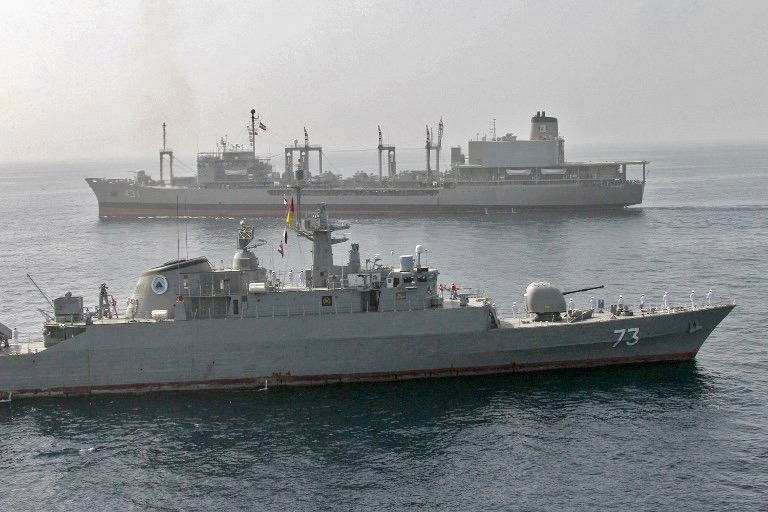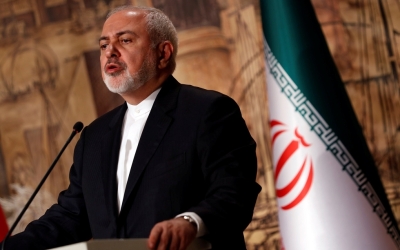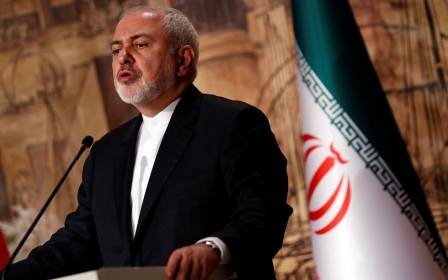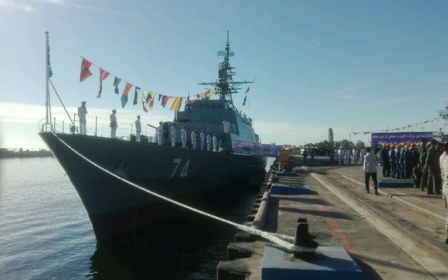With an eye towards Iran, US reaches strategic port deal with Oman

The United States reached a strategic port deal with Oman on Sunday that US officials say will allow their military better access to the Gulf region and reduce the need to send ships through the Strait of Hormuz, a maritime choke point off Iran.
The US embassy in Oman said in a statement that the agreement governed US access to facilities and ports in Duqm as well as in Salalah and "reaffirms the commitment of both countries to promoting mutual security goals," Reuters reported.
The state-run Oman News Agency said the "framework agreement" was aimed at bolstering "Omani-American military relations" in a report on its English-language website, according to AFP.
"It will allow the US forces to take advantage from the facilities offered at some of the Sultanate's ports and airports during visits of the US military vessels and aircraft, particularly in the port of Duqm," it said. Duqm port is located in southern Oman on the Arabian Sea about 500km (310 miles) from the Strait of Hormuz.
At the mouth of the Gulf, the strait is crucial to global energy supplies, with about a third of the world's seaborne oil passing through it every day.
Iran has repeatedly threatened to block the strait due to tensions with Gulf nations, including its main regional rival Saudi Arabia.
The narrow waterway is also an international transit route where American forces routinely pass and which has seen tense encounters between them and Iranian forces in the past.
The accord comes as the US grows increasingly concerned about Iran's expanding missile programmes, which have improved in recent years despite sanctions and diplomatic pressure by the US.
A US official, speaking on condition of anonymity, said the deal was significant in improving access to ports that connect to a network of roads to the broader region, giving the US military great resiliency in a crisis.
"We used to operate on the assumption that we could just steam into the Gulf," one US official said, adding that now "the quality and quantity of Iranian weapons raises concerns."
The US official noted that the agreement would expand US military options in the region for any kind of crisis.
Duqm is an ideal port for large ships. It is even big enough to turn around an aircraft carrier, a second official said.
"The port itself is very attractive and the geostrategic location is very attractive, again being outside the Strait of Hormuz," the official said, adding that negotiations had begun under the Obama administration.
For Oman, the deal will further advance its efforts to transform Duqm, once just a fishing village, into a key Middle East industrial and port centre, as it diversifies its economy beyond oil and gas exports.
The deal could also better position the United States in the region for what has become a global competition with China for influence.
Chinese firms once aimed to invest as much as $10.7bn in the Duqm project, a massive injection of capital into Oman, in what was expected to be a commercial, not military, arrangement.
"It looks to me like the Chinese relationship here isn't as big as it appeared it was going to be a couple of years ago," the second official said.
"There's a section of the Duqm industrial zone that's been set aside for the Chinese ... and as far as I can tell so far they've done just about nothing."
The United States has a number of military bases across the Gulf - the largest in Qatar, with about 10,000 troops.
Middle East Eye propose une couverture et une analyse indépendantes et incomparables du Moyen-Orient, de l’Afrique du Nord et d’autres régions du monde. Pour en savoir plus sur la reprise de ce contenu et les frais qui s’appliquent, veuillez remplir ce formulaire [en anglais]. Pour en savoir plus sur MEE, cliquez ici [en anglais].





